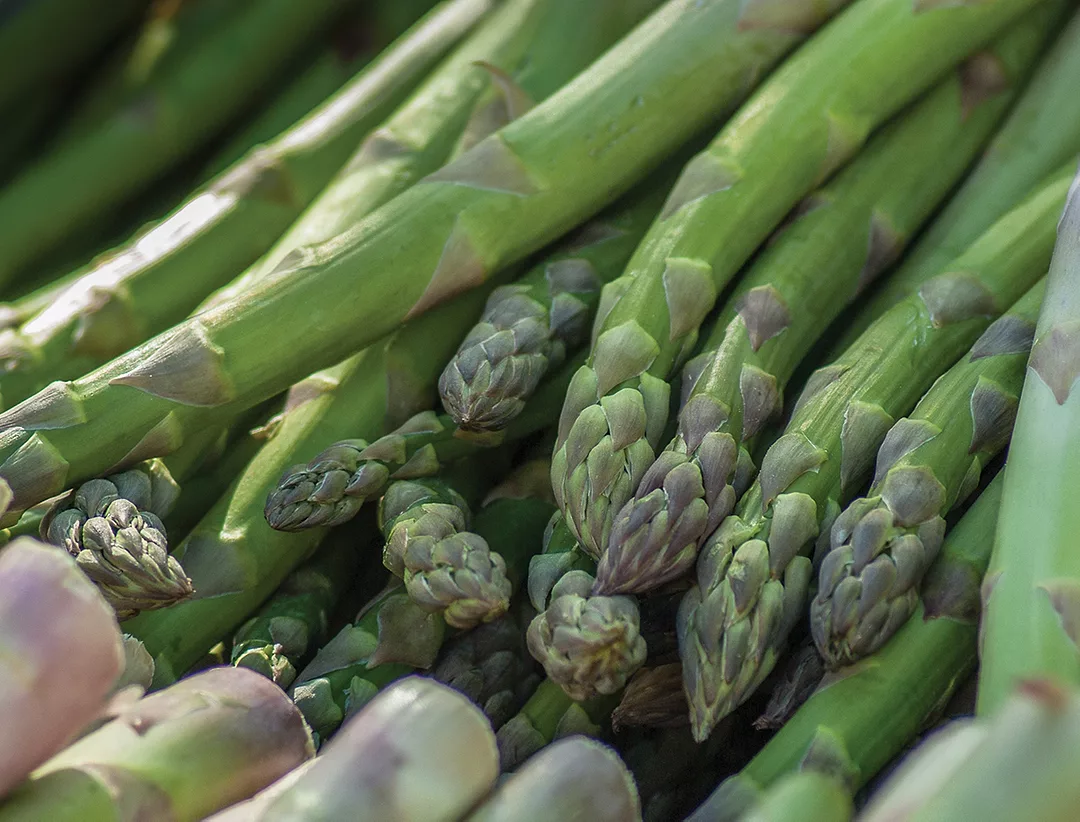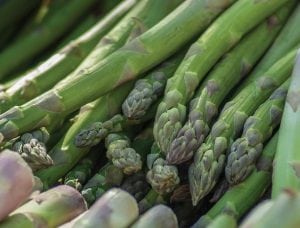
Home » Focus on fresh: Asparagus yields improving after market collapse
Focus on fresh: Asparagus yields improving after market collapse

May 6, 2018
After years spent recovering from the collapse of the U.S. asparagus industry, Washington has experienced steady growth as local producers find new ways to adapt to the changed market.
Thirty years ago, Washington was the world’s center for asparagus production, producing 100 million pounds in 1990, said Alan Schreiber, an Eltopia farmer and executive director of the Washington Asparagus Commission.
In 2006, stiff competition from Peru effectively wiped out U.S. processing when companies began moving their operations to the South American country where labor and other production costs were cheaper, ultimately leading to a collapse of the U.S. asparagus industry.
In 2014, 15 million pounds of asparagus were produced domestically, Schreiber said.
Gary Larsen, Pasco grower and chairman of the Washington Asparagus Commission, said since the collapse, California has gradually been pulling out of the market because of increasing labor costs and harsh climatic conditions.
But Washington is hanging on — in part to an ample water supply, agreeable climate and seasonal weather patterns in alignment with conditions necessary for asparagus’ growth phases.
“Our industry re-invented itself,” Schreiber said.
Domestic growers have turned their attention to selling fresh asparagus within the U.S. and Canada, with a lesser focus on freezing and pickling.
Comparatively, asparagus from Peru, which must be fumigated, is often 15 days or more old before it reaches U.S. consumers.
Despite new pressures from Mexico, Schreiber reported that Washington’s asparagus yields have been increasing by 15 percent per year since 2014, with the 2017 season weighing in at 23 million pounds produced.
Growth is expected to continue by another 10 percent in 2018.
Larsen said yields are up to double what they were in the 1990s.
“Back in ’85, when we started with asparagus, a good yield was 5,000 to 6,000 pounds. Now we are over 10,000 pounds,” he said.
He added that 15,000-pound varieties are right around the corner with the current pace of hybridization, which focuses on breeding higher-yielding male asparagus plants.
Now, “we are pulling fields out of production at 6,000 pounds,” Larsen said.
It doesn’t make sense economically to hold onto those fields, said Jim Middleton, a Pasco grower. “Gone are the days when we could keep an older field in that’s not producing quite as well. All fields have to be high-producing to keep workers interested in working that field, because they know they can make a lot of money,” he said.
Another priority of breeding programs is extending the longevity of crops. “In years past, a field could go 20 years or more” before needing to be replanted, Middleton said. “These days, not even 12 years.”
 But despite asparagus being a perennial crop, replanting with high-yield varieties doesn’t come cheap at $1,000 per pound, Larsen said.
But despite asparagus being a perennial crop, replanting with high-yield varieties doesn’t come cheap at $1,000 per pound, Larsen said.
“But farmers have to afford them because if you don’t get these hybrids, you won’t be in the asparagus business. Cutters want a good-producing field to cut,” Larsen said.
The industry’s top concerns are availability of labor and high costs, Schreiber said. “Washington has, by far, the highest agricultural labor cost in the Western Hemisphere.”
And with the state-mandated minimum wage going up, he said, “It’s pretty horrific for us; how do we pass the cost on?”
“(It’s) tightening up profit margins,” Middleton said. “It’s why a lot of people don’t get into asparagus. … Regulations just get to be more and more — paid rest break, paid sick leave — for a temporary, seasonal kind of worker, it’s something that we’ve had an exemption for in the past.
“And the paperwork requirements on the payroll side of things is super, super cumbersome. Most of us are small operations; we don’t have lots of levels of people to take over responsibilities like that. It gets to be a real burden for people only employed for eight or nine weeks.”
“It makes us not as competitive with places like Michigan and Mexico,” Schreiber said.
According to Larsen, on average, asparagus cutters in Mexico get paid $13 per day, while in Washington, they’re sometimes paid more than $30 per hour.
“Mexican labor is definitely cheaper, but … what they save in labor, they put into infrastructure for farms and putting water in,” such as wells and packing sheds, Larsen said.
“Sometimes we feel like Mexico is a Third World country that doesn’t have technology or don’t need it because of there being lots of labor available, but that’s not the case at all. I think they’re ahead of us in a lot of ways,” Middleton said.
Mexico has about 38,000 acres under cultivation — what Washington boasted in its heyday, which has dwindled to about 4,000 acres today — enabling them two chances to deliver to the U.S. market: once before the U.S. begins harvesting in April, and again in mid-May as the U.S. is winding down.
“Our window of opportunity is getting smaller and smaller,” Larsen said. “When I first started in ’85, we would get started around (the) first of April and would go into July. Now, we’re done by (the) first week of June or last day of May.”
Another issue big producers like Mexico and Peru present to the market is overproduction. “They’re producing more than the market can move, so the price drops,” forcing U.S. growers to follow suit, Larsen said.
“The farmer is a price taker, not a price maker. We can’t dictate what (price) we’re getting,” Middleton said.
“It’s time (big producers) start thinking about curtailing self-production for their own survival; they’re selling asparagus at less than the cost to produce it,” Larsen added.
Where automation and mechanization have had a hand in reducing labor costs for other crops, asparagus remains a hand-cut crop.
“We’ve tried everything we can think of,” Schreiber said. “We’ve put a fortune into coming up with asparagus pickers or carts that other places use, and we can’t come up with anything better than hand-harvested.”
“The economic climate is not good for hand-harvested crops in Washington anymore,” Larsen said.
He added, “When things start getting machine-harvested, that’s where you’re going to get lesser quality foods. As a nation, we have to ask ourselves what type of foods do we want. We can put cheaper foods out there, but you’re going to have to modify your quality standards.”
Agriculture + Viticulture
KEYWORDS focus agriculture viticulture 2018





